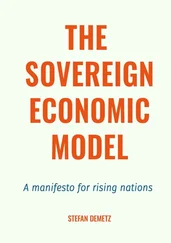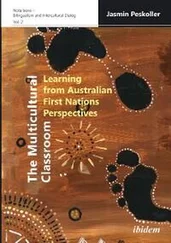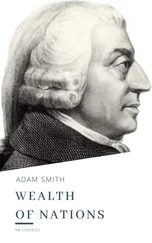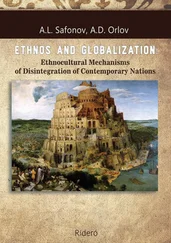The next conflict in New South Wales would be between the elite and the rest of the society, made up of convicts, ex-convicts, and their families. The elite, led by former guards and soldiers such as Macarthur, included some of the free settlers who had been attracted to the colony because of the boom in the wool economy. Most of the property was still in the hands of the elite, and the ex-convicts and their descendants wanted an end to transportation, the opportunity of trial by a jury of their peers, and access to free land. The elite wanted none of these. Their main concern was to establish legal title to the lands they squatted on. The situation was again similar to the events that had transpired in North America more than two centuries earlier. As we saw in chapter 1, the victories of the indentured servants against the Virginia Company were followed by the struggles in Maryland and the Carolinas. In New South Wales, the roles of Lord Baltimore and Sir Anthony Ashley-Cooper were played by Macarthur and the Squatters. The British government was again on the side of the elite, though they also feared that one day Macarthur and the Squatters might be tempted to declare independence.
The British government dispatched John Bigge to the colony in 1819 to head a commission of inquiry into the developments there. Bigge was shocked by the rights that the convicts enjoyed and surprised by the fundamentally inclusive nature of the economic institutions of this penal colony. He recommended a radical overhaul: convicts could not own land, nobody should be allowed to pay convicts wages anymore, pardons were to be restricted, ex-convicts were not to be given land, and punishment was to be made much more draconian. Bigge saw the Squatters as the natural aristocracy of Australia and envisioned an autocratic society dominated by them. This wasn’t to be.
While Bigge was trying to turn back the clock, ex-convicts and their sons and daughters were demanding greater rights. Most important, they realized, again just as in the United States, that to consolidate their economic and political rights fully they needed political institutions that would include them in the process of decision making. They demanded elections in which they could participate as equals and representative institutions and assemblies in which they could hold office.
The ex-convicts and their sons and daughters were led by the colorful writer, explorer, and journalist William Wentworth. Wentworth was one of the leaders of the first expedition that crossed the Blue Mountains, which opened the vast grasslands to the Squatters; a town on these mountains is still named after him. His sympathies were with the convicts, perhaps because of his father, who was accused of highway robbery and had to accept transportation to Australia to avoid trial and possible conviction. At this time, Wentworth was a strong advocate of more inclusive political institutions, an elected assembly, trial by jury for ex-convicts and their families, and an end to transportation to New South Wales. He started a newspaper, the Australian , which would from then on lead the attack on the existing political institutions. Macarthur didn’t like Wentworth and certainly not what he was asking for. He went through a list of Wentworth’s supporters, characterizing them as follows:
sentenced to be hung since he came here
repeatedly flogged at the cart’s tail a
London Jew
Jew publican lately deprived of his license
auctioneer transported for trading in slaves
often flogged here
son of two convicts
a swindler—deeply in debt
an American adventurer
an attorney with a worthless character
a stranger lately failed here in a musick shop
married to the daughter to two convicts
married to a convict who was formerly a tambourine girl.
Macarthur and the Squatters’ vigorous opposition could not stop the tide in Australia, however. The demand for representative institutions was strong and could not be suppressed. Until 1823 the governor had ruled New South Wales more or less on his own. In that year his powers were limited by the creation of a council appointed by the British government. Initially the appointees were from the Squatters and nonconvict elite, Macarthur among them, but this couldn’t last. In 1831 the governor Richard Bourke bowed to pressure and for the first time allowed ex-convicts to sit on juries. Ex-convicts and in fact many new free settlers also wanted transportation of convicts from Britain to stop, because it created competition in the labor market and drove down wages. The Squatters liked low wages, but they lost. In 1840 transportation to New South Wales was stopped, and in 1842 a legislative council was created with two-thirds of its members being elected (the rest appointed). Ex-convicts could stand for office and vote if they held enough property, and many did.
By the 1850s, Australia had introduced adult white male suffrage. The demands of the citizens, ex-convicts and their families, were now far ahead of what William Wentworth had first imagined. In fact, by this time he was on the side of conservatives insisting on an unelected Legislative Council. But just like Macarthur before, Wentworth would not be able to halt the tide toward more inclusive political institutions. In 1856 the state of Victoria, which had been carved out of New South Wales in 1851, and the state of Tasmania would become the first places in the world to introduce an effective secret ballot in elections, which stopped vote buying and coercion. Today we still call the standard method of achieving secrecy in voting in elections the Australian ballot.
The initial circumstances in Sydney, New South Wales, were very similar to those in Jamestown, Virginia, 181 years earlier, though the settlers at Jamestown were mostly indentured laborers, rather than convicts. In both cases the initial circumstances did not allow for the creation of extractive colonial institutions. Neither colony had dense populations of indigenous peoples to exploit, ready access to precious metals such as gold or silver, or soil and crops that would make slave plantations economically viable. The slave trade was still vibrant in the 1780s, and New South Wales could have been filled up with slaves had it been profitable. It wasn’t. Both the Virginia Company and the soldiers and free settlers who ran New South Wales bowed to the pressures, gradually creating inclusive economic institutions that developed in tandem with inclusive political institutions. This happened with even less of a struggle in New South Wales than it had in Virginia, and subsequent attempts to put this trend into reverse failed.
AUSTRALIA, LIKE THE UNITED STATES, experienced a different path to inclusive institutions than the one taken by England. The same revolutions that shook England during the Civil War and then the Glorious Revolution were not needed in the United States or Australia because of the very different circumstances in which those countries were founded—though this of course does not mean that inclusive institutions were established without any conflict, and, in the process, the United States had to throw off British colonialism. In England there was a long history of absolutist rule that was deeply entrenched and required a revolution to remove it. In the United States and Australia, there was no such thing. Though Lord Baltimore in Maryland and John Macarthur in New South Wales might have aspired to such a role, they could not establish a strong enough grip on society for their plans to bear fruit. The inclusive institutions established in the United States and Australia meant that the Industrial Revolution spread quickly to these lands and they began to get rich. The path these countries took was followed by colonies such as Canada and New Zealand.
There were still other paths to inclusive institutions. Large parts of Western Europe took yet a third path to inclusive institutions under the impetus of the French Revolution, which overthrew absolutism in France and then generated a series of interstate conflicts that spread institutional reform across much of Western Europe. The economic consequence of these reforms was the emergence of inclusive economic institutions in most of Western Europe, the Industrial Revolution, and economic growth.
Читать дальше












